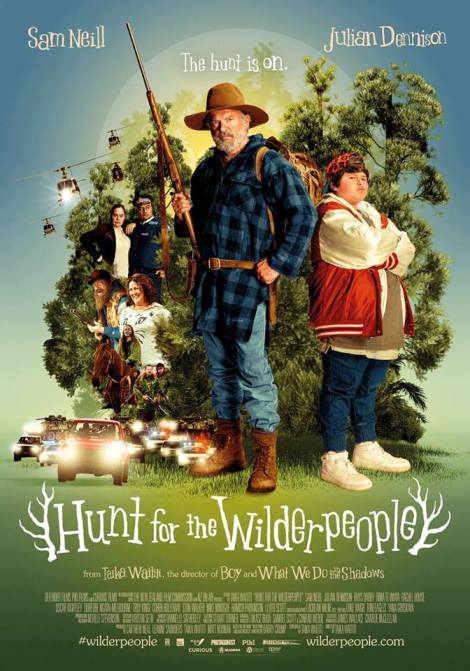Hunt for the Wilderpeople
Posted on June 23, 2016 at 5:22 pm
B+| Lowest Recommended Age: | High School |
| MPAA Rating: | Rated PG-13 for thematic elements including violent content, and for some language |
| Profanity: | Some strong language |
| Alcohol/ Drugs: | Drug reference |
| Violence/ Scariness: | Extended action-style peril and violence, some injuries |
| Diversity Issues: | Diverse characters |
| Date Released to Theaters: | June 24, 2016 |

Waititi’s films have a lively energy that provides a delicious counterpoint to the understated comedy. The story is told with wry chapter titles, beginning with “A Real Bad Egg.” Ricky is described as “a bit of a handful” with a history that includes “disobedience, spitting, running away…and that’s just the stuff we know about.” But we can see that this chubby kid who says he intends to grow up to be a drug dealer and rap star and get killed in a drive-by wants to be part of a family, even though he does not know exactly how. Bella has just the combination of bluntness and generosity of spirit to make Ricky begin to feel welcome. He’s not looking for cuddles and compliments. There is a bracing reality to Bella that begins to help him thaw. She kills a pig with a knife and says, “There’s dinner, sorted. Want to help me gut it?” He gets a dog and comes up with three possible names: Psycho, Megatron, or Tupac. This is a place where those names are just fine.
On the run, he is back to trusting no one but himself. He says he lives in Rickytown, population: Ricky. Hec tells him it’s time to get back to Realitytown. But that trip has to wait when Hec is injured and they have to stay in “Broken Foot Camp” until he is well enough to walk. And that gives them a chance to get to know each other, and become enough of a team to take on some of the challenges they meet along the way.
They meet some delightfully quirky characters, including three hunters who mistake Hec a child molester (an attempt at humor that does not work at all well), a paranoid hermit known as Psycho Sam (Rhys Darby), and a girl on a horse who brings Ricky home, where her father asks him if he can take a selfie. Waititi’s affection for the independent spirits of the people who live in the wilderness make us, like Ricky, glad to spend time with them.
(NOTE: look for writer/director Waititi in a small role as a clergyman)
Parents should know that this film includes extended peril and some violence including guns, with characters injured, a sad death, themes of abandonment, references to molestation, a drug reference, and some strong language.
Family discussion: When did Ricky and Hec begin to trust each other? When were they in the greatest danger?
If you like this, try: “Big Game” and “The Dish”


